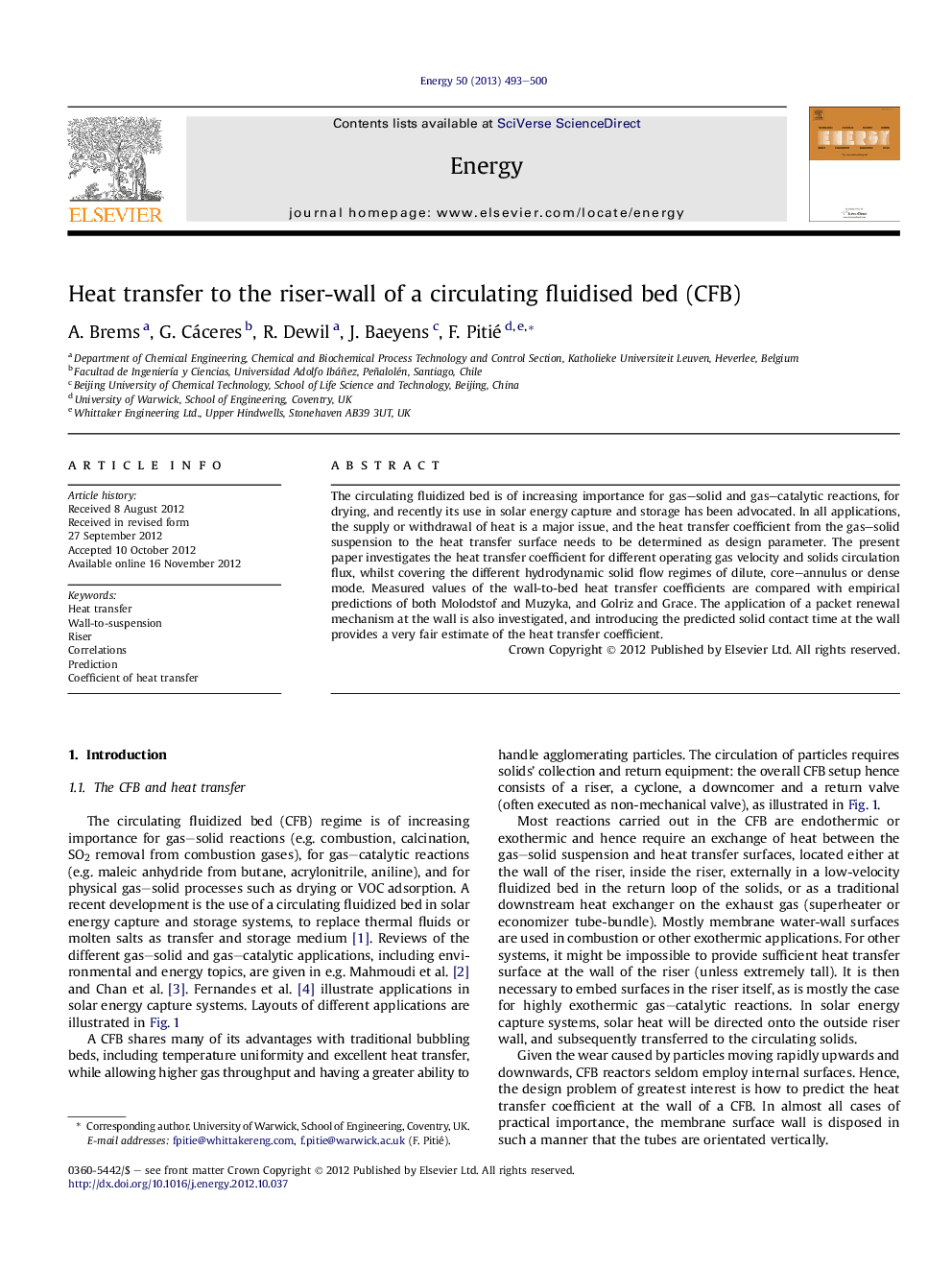| Article ID | Journal | Published Year | Pages | File Type |
|---|---|---|---|---|
| 1733260 | Energy | 2013 | 8 Pages |
The circulating fluidized bed is of increasing importance for gas–solid and gas–catalytic reactions, for drying, and recently its use in solar energy capture and storage has been advocated. In all applications, the supply or withdrawal of heat is a major issue, and the heat transfer coefficient from the gas–solid suspension to the heat transfer surface needs to be determined as design parameter. The present paper investigates the heat transfer coefficient for different operating gas velocity and solids circulation flux, whilst covering the different hydrodynamic solid flow regimes of dilute, core–annulus or dense mode. Measured values of the wall-to-bed heat transfer coefficients are compared with empirical predictions of both Molodstof and Muzyka, and Golriz and Grace. The application of a packet renewal mechanism at the wall is also investigated, and introducing the predicted solid contact time at the wall provides a very fair estimate of the heat transfer coefficient.
► Wall-to-suspension heat transfer coefficient is important to design CFB applications. ► This heat transfer coefficient was measured for different CFB operations. ► Experimental heat transfer results agree with previous model approaches. ► Additional research is needed to validate the surface renewal approach.
